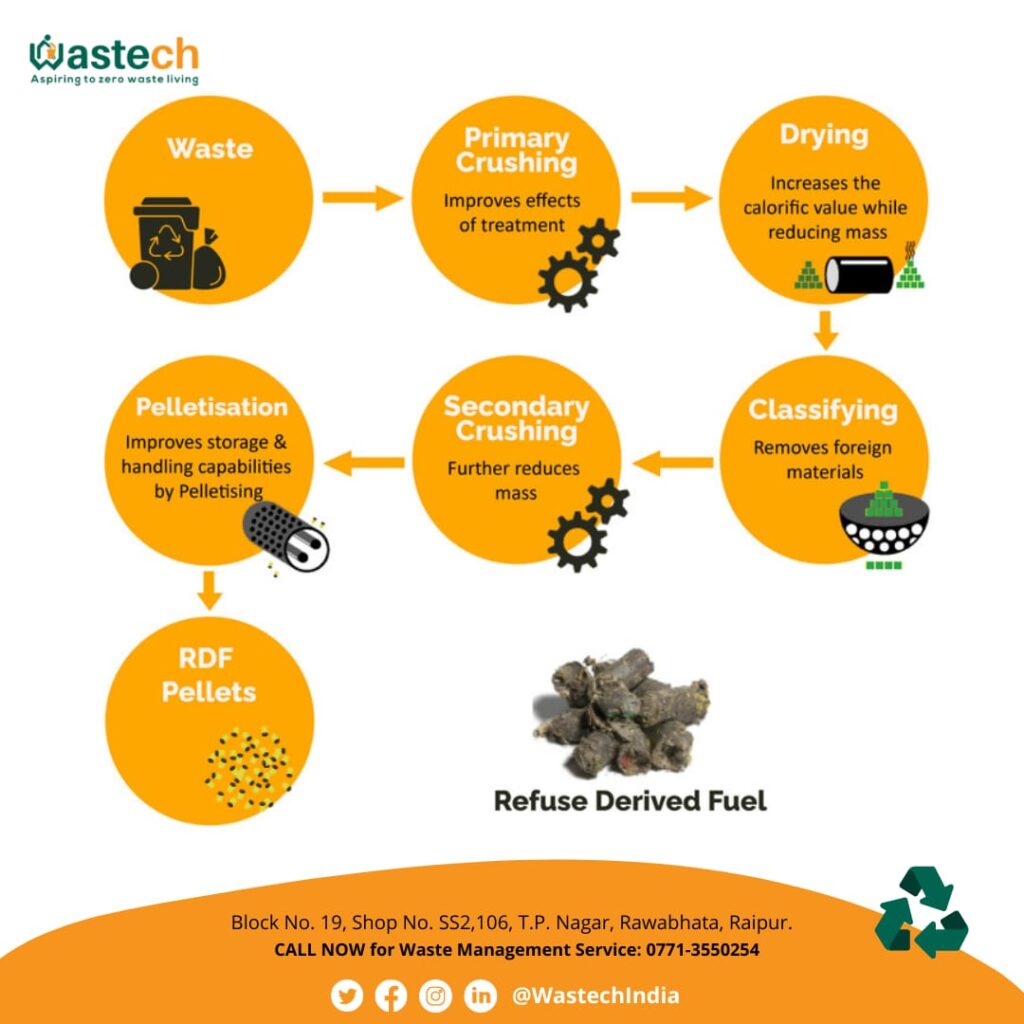The Pilling of waste in landfills has become a serious concern for our environment. People are becoming more aware of recycling and waste management, but are we aware of the other alternatives to managing the waste issue?
The other alternative that we will talk about here (Refuse Derived Fuel) will change your view about the way we fuel our world.

What is Refuse Derived Fuel?
Solid Waste is fast-growing and has innumerable hazards for the environment. Instead of throwing it into a landfill, it can be put to good use via the method of Refuse Derived Fuel- RDF for short. As the name suggests, RDF is a fuel produced from refuse such as industrial waste, municipal solid waste (MSW), or commercial waste. The waste collected is shredded, dried, baled, and then burned in a huge cement kiln to produce electricity.
RDF can be further specified into- Tyre Derived Fuels (TDF), Solid Recovered Fuels (SRF), and Alternative Fuels (RDF). RDF consists mainly of combustible waste, including non-recyclable plastics (except PVC), paper, cardboard, labels, and other corrugated materials.
Is This A Landfill Alternative?
Dumping of waste in low-lying areas is unscientific and filthy which leads to methane emissions, water pollution, and soil degradation. In contrast, this renewable energy source is an eco-friendly option and a viable landfill alternative. The conversion of MSW to RDF contributes to the scientific management of MSW. It also replaces the use of fossil fuels. The fuel is derived after basic processing to increase the calorific value of Combustible waste materials.
Asia’s urban regions generate around 760,000 tonnes of municipal solid waste (MSW) every day or roughly 2.7 million m3. This figure is expected to rise to 1.8 million tonnes per day, or 5.2 million m3 per day, by 2025. These figures are assumed, but the actual values may be far more horrifying.
RDF provides several benefits which include energy efficiency, transportation ease, improved fuel properties, and so on. Global interest has been increasing every day in RDF and many countries are adopting this modern method. Technological advancements have improved RDF plants so that the releases from them do not have negative impacts on human health.